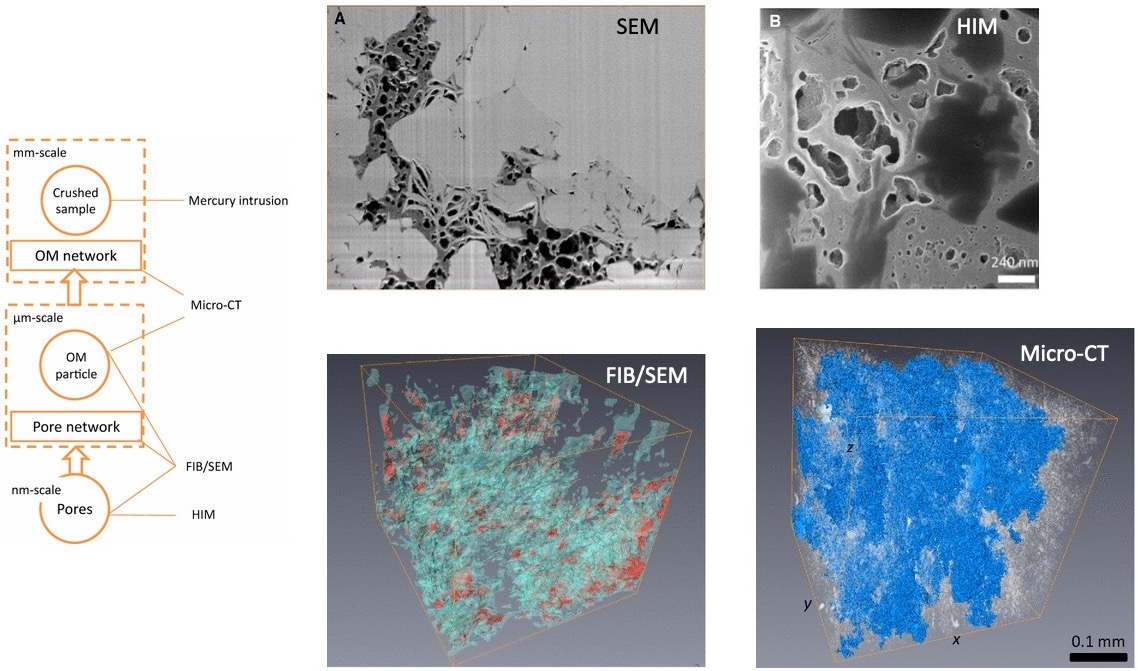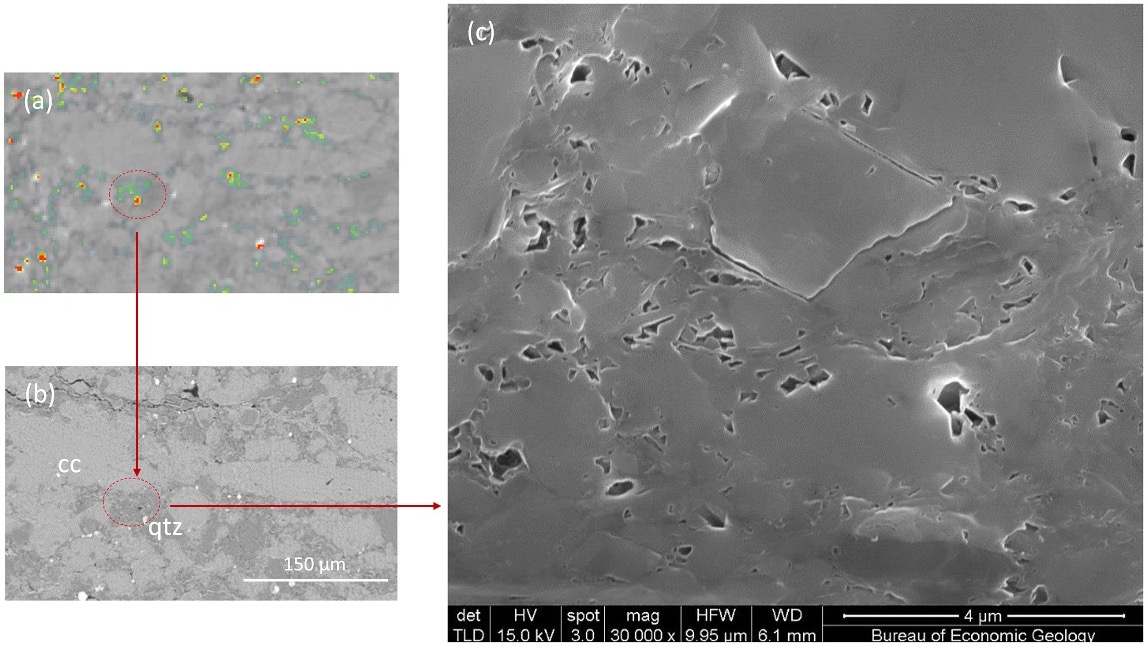Pore network connectivity, heterogeneity, and upscaling in shale
We started the effort in pore network characterization and upscaling by using FIB/SEM, helium ion microscopy (HIM), synchrotron micro-CT, and mercury intrusion. In an organic matter pore dominated sample, organic matter particle (microscale) can be imaged using micro-CT, whereas the pores inside can be imaged through HIM or SEM. An upscaling algorithm on permeability estimation is thus proposed based on this feature combined with pore size distribution from MICP.

We then moved forward with an oleic tracer imbibition and imaging technique. The imbibition of the tracer automatically indicate the connectivity of the pores. Examination of the same sample under SEM with higher magnification with the guidance of micro-CT image after oil imbibition can explicitly demonstrate the dominant pore type, surrounding mineralogy, and spatial distribution. Whereas in nm-scale the heterogeneity of the pores in shale is manifest, we found that the heterogeneity of the pore system can be overstated at the scale of millimeter.

Representative publications
Peng, S., R. Reed, X. Xiao, Y. Yang, Y. Liu, 2019. Tracer-Guided Characterization of Dominant Pore Networks and Implications for Permeability and Wettability in Shale, Journal of Geophysical Research – Solid Earth, doi:10.1029/2018JB016103.
Peng, S., J. Yang, X. Xiao, B. Loucks, S. Ruppel, T. Zhang, 2015. An integrated method for upscaling pore-network characterization and permeability estimation: Example from the Mississippian Barnet Shale. Transport in Porous Media, vol. 109, no. 2, p. 359–376, doi:10.1007/s11242-015-0523-8.
Peng, S, T. Zhang, R. Loucks, J. Shultz, 2017. Application of mercury injection capillary pressure to mudrocks: Conformance and compression corrections. Marine and Petroleum Geology, vol. 88, p. 30–40, doi:10.1016/j.marpetgeo.2017.08.006